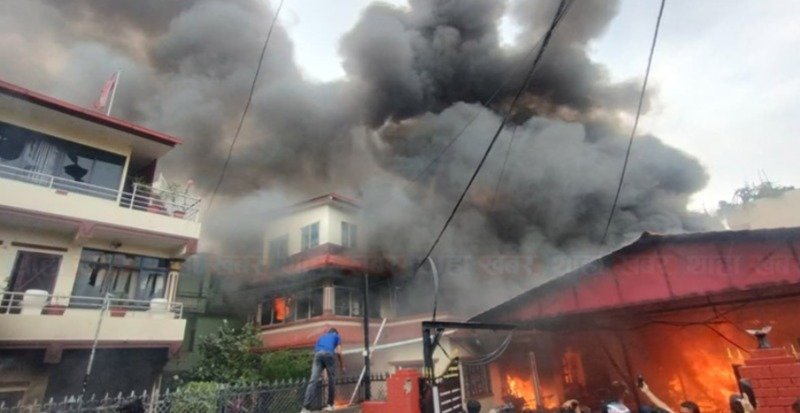Pilgrimage Dream Turns Into Uncertainty
For hundreds of Indian pilgrims, the resumption of the revered Kailash Mansarovar Yatra in 2025 was nothing short of a dream fulfilled. After a four-year suspension following the COVID-19 outbreak in 2020, the Ministry of External Affairs (MEA) facilitated fresh batches of yatris through government-approved routes via Uttarakhand and Sikkim. Among them was Lucknow-based doctor Sujay Sidhan, who had long awaited this opportunity. But instead of a peaceful conclusion to the sacred journey, Sidhan and many others now find themselves stranded in Tibet, unable to return home.
Nepal Crisis Shuts Traditional Exit Routes
The situation has been complicated by widespread youth-led protests across Nepal, which escalated into a political crisis in recent weeks. With tensions spilling into border regions, safe travel routes between Nepal and India have been severely disrupted. Since most pilgrims exit the yatra through Nepalese transit towns before heading back to India, the turmoil has left them stranded in Darchen, a town situated at 6,000 metres altitude in the Tibet Autonomous Region of China.
Nepal is on fire 🔥 Protesters torch homes of the President, PM & Ministers. PM Oli flees, regime collapses, airport shuts down. History is unfolding in Kathmandu! pic.twitter.com/wFHnz1TbYl
— Henry Kabogo 💧 ❄ 🇰🇪 (@Kabogo_Henry) September 9, 2025
Darchen Struggles With Limited Facilities
Pilgrims describe Darchen as ill-equipped to handle such an unexpected surge in stranded visitors. The town is primarily a transit point for those performing the arduous parikrama around Mount Kailash. Returning pilgrims, often suffering from altitude sickness, rely on limited hotel rooms fitted with oxygen support for recovery. With new yatris arriving and no movement outwards, available accommodations have been overwhelmed.
“The authorities are shifting us to smaller towns on the China-Nepal border,” Sidhan told The Indian Express. “We do not know what awaits us there—whether proper medical help, food, or even a way back to India.”
MEA Monitoring Developments Closely
Back in New Delhi, the MEA has confirmed it is monitoring the situation and is in touch with Chinese authorities. Officials acknowledge that around 750 pilgrims had been allowed for the 2025 season under the bilateral arrangement with China. Efforts are reportedly underway to ensure that stranded yatris are given safe shelter, adequate supplies, and eventual passage back home.
Diplomatic experts note that India faces a delicate situation, balancing ties with both Nepal and China while ensuring the safety of its citizens. “This crisis highlights the vulnerability of such high-altitude yatras, which depend on multiple transit countries and unpredictable geopolitical conditions,” said a senior South Asia analyst.
Families Back Home Raise Concerns
Families of the pilgrims are increasingly anxious, with many voicing concerns about health emergencies at such altitudes. Social media platforms are flooded with appeals urging the government to speed up evacuation efforts. “My brother is in Tibet, stuck without medicines he needs for his heart condition. We just want him home safe,” one relative posted online.
Several lawmakers have also raised the issue in Parliament, urging the government to chalk out an emergency repatriation plan. Suggestions include exploring airlift options through Chinese territory or creating a temporary safe corridor via India’s land borders.
A Sacred Yatra Marred by Crisis
For decades, the Kailash Mansarovar Yatra has held immense spiritual significance for Hindus, Buddhists, Jains, and followers of Bon traditions. Pilgrims brave challenging terrain, high altitudes, and harsh weather in pursuit of what many describe as a life-changing journey. Yet this year, the experience has been overshadowed by geopolitical realities beyond their control.
As Nepal grapples with its political unrest and China manages its own border concerns, Indian pilgrims remain caught in the middle. While authorities have assured them of eventual safe passage, the uncertainty weighs heavily on yatris who had envisioned the yatra as a divine culmination rather than an ordeal of survival.
Looking Ahead
The crisis raises pressing questions about the future of the pilgrimage. Experts suggest that India may need to negotiate alternative return corridors or invest in direct evacuation options to prevent such scenarios. Meanwhile, stranded yatris like Dr. Sidhan wait with hope, clinging to faith that the divine journey they began will not end in despair.








